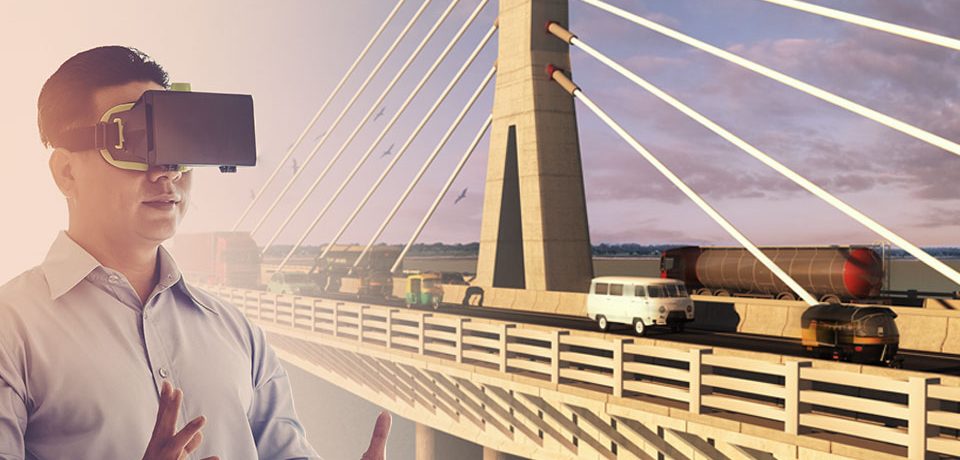By Brendan Walashek, GISP, GIS Division Manager
We have likely all heard the buzzwords “VR” and “AR.” They promise wow-factor technology; imagine being able to take a client out to a job site and project a hologram of their new building, overpass, or park right before their eyes. Well, that technology is here now, is here to stay, and is highly effective.
With roots in the gaming industry, AR (augmented reality) and VR (virtual reality) have migrated over to other enterprise-level industries such as healthcare, architecture, and engineering. It is used to visualize and collaborate with 3D models that just cannot be accomplished with a traditional desktop computer screen. The same technology that is being used to make computer-generated imagery, special effects, animated movies, and the latest 3D game engines is now being used to build virtual worlds showcasing engineering designs.
McElhanney increasingly uses VR, AR, and mixed reality (MR) in engineering design, visualization, and stakeholder engagement. VR can be used in an office, whereas AR and MR augments – or adds to – real-world viewing by overlaying 3D models or holograms on top of reality. Our in-house development team can take complex Autodesk Civil 3D designs and output them into interactive and immersive virtual worlds. The ability to tweak design and interact with the 3D model in a 1:1 scale environment is invaluable for engineers, clients, and public stakeholders. Users put on a head-set and run through what-if scenarios by changing objects in the model as they walk through it. Want to see a few different options for a bridge tower? Point and click the support tower to cycle through the options. Want to increase live traffic flow to see how traffic volumes impact a highway interchange? Simply click away!
McElhanney created VR models of bridges, parks, highways, and more to allow designers to view various structure options before construction starts. This has added a new and interactive tool for client consultation which can be used on any structure or design. Changes can be made before going to construction by seeing a wide range of functional concerns, sightlines, and even clash detection issues. VR users can tour, move underneath, and interact with a bridge, change a pillar’s shape, play with railing options, or widen a bike lane. VR is much more than a rendering, video flythrough, or a static 3D model on a computer screen. VR creates new opportunities.
A streamlined workflow from Civil 3D to VR allows us to change the way designs can be viewed by technical and non-technical stakeholders. It’s an innovative way for designers, planners, clients, and community members to share and collaborate on design, bringing a Skype meeting or public engagement platform to a whole new level. Storyboards, 2D posters, and design drawings frequently cannot convey the real-world presence of a final project. This technology invites stakeholders to “visit” the project – from the comfort of an office (VR), or from a site (AR/MR).
Which technology is best; AR, VR, or MR?
The answer is ALL! Each visualization tool has its advantages and disadvantages. VR relies on you to be tethered to a powerful computer via a series of cables. The VR headsets are inexpensive, but the gaming-level laptop is not. AR and MR allow the user to walk around more freely without being hampered with a computer or cables. Then why use VR? To answer that, you need to know what your client needs to see. The complexity of the models and complete immersive environments in VR are much more detailed than you can produce in an AR/MR environment. In general terms, you get what you pay for. AR is inexpensive, can be consumed on a smartphone or tablet, but the least powerful. VR and MR are more powerful, richly immersive, but can carry a heavy price tag.
With costs decreasing on headsets and the ongoing advances in holographic headsets (such as the Microsoft HoloLens), VR, AR, and MR are no longer a technology of the future; it’s a promise of today.
